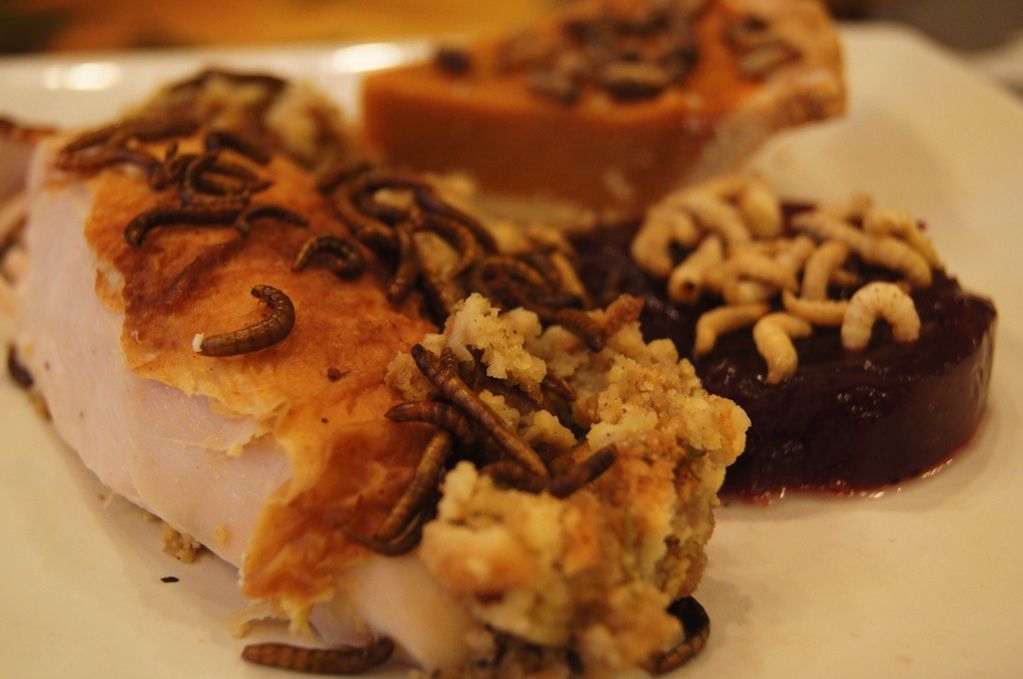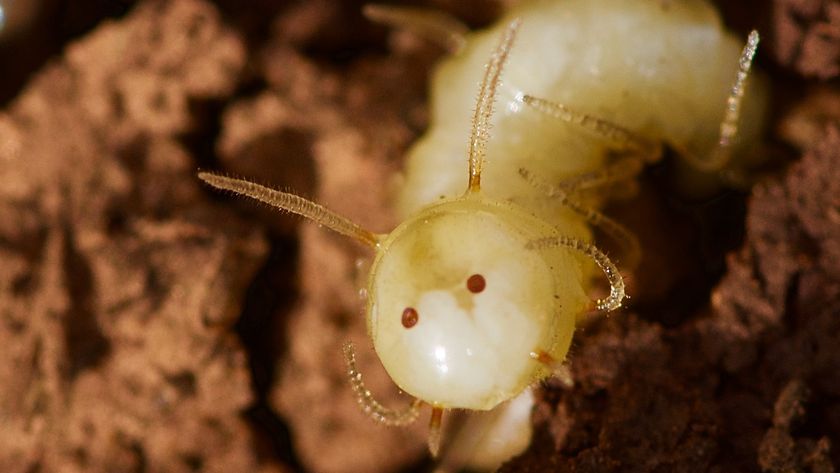
Mealworms, wax worms and crickets may not be obvious choices for Turkey Day, but at a special event this week, bug aficionados can taste new, insect-y twists on Thanksgiving staples such as pumpkin pie and cranberry sauce.
The Audubon Butterfly Garden and Insectarium in New Orleans is cooking up insect-filled Thanksgiving treats at their cafe, called Bug Appétit, this Tuesday (Nov. 26) and Wednesday (Nov. 27).
The Thanksgiving snacks will include a mealworm-filled cornbread stuffing, wax worm cranberry sauce and a dessert of cricket pumpkin pie, said Jayme Necaise, director of animal and visitor programs at the museum. Patrons will be offered samples of treats, along with a small cube of turkey. Those who like what they tried can ask for seconds. [See Images of the Buggy Treats]
Healthy option
Insects are chock-full of protein and nutrients such as iron and magnesium, and unlike beef or pork, most bugs require little energy, water or space to raise. Harvesting bugs such as grasshoppers from crops can be an easy way to reduce pesticide use. As a result, many experts believe that raising insects for food will be a key, environmentally friendly way to feed the 11 billion people on the planet by 2100.
The insectarium routinely serves bugs to its patrons in dishes such as mealworm-filled six-legged salsa and "chocolate chirp" cookies, which are made with crickets.
"But for Thanksgiving, we wanted to kick it up a notch and do something a little special for our guests," Necaise told LiveScience.
Sign up for the Live Science daily newsletter now
Get the world’s most fascinating discoveries delivered straight to your inbox.
The mealworms tend to have an earthy taste, similar to pumpernickel or other earthy breads. Wax worms, which are the larva of moths, live in beehives and eat exclusively beeswax, so they have a slightly sweet taste. Like all insects, which have an exoskeleton, the first bite is crunchy, but the inside is soft, akin to the inside of a corn kernel; the overall taste is a bit like almond paste, Necaise said.
The crickets are typically pan-roasted.
"They get very crispy and crunchy, and they taste like a dry roasted nut," with some likening their flavor to walnuts or pecans, Necaise said.
Each of the dishes are usually about 25 percent insect and 75 percent traditional ingredients, because higher percentages of bug parts could be a bit of a shock to an unaccustomed palate, Necaise said.
"If you take a mouthful of crickets, it takes a while to chew it because of the exoskeleton," Necaise said.
Hardcore bug eaters, however, can always ask for extra cricket on the side.
Humane and sanitary
The insects are purchased from commercial suppliers who raise them predominantly for the pet food industry (reptiles and birds are particular fans). The bugs are raised in sanitary conditions and eat an organic diet.
"They're fed only the finest fruits and vegetables and meal bran," Necaise said.
To prepare the insects, the best option is to put them into bags in the freezer, where their metabolism slows down, they go to sleep and then eventually die painlessly, Necaise said.
Those who are interested in making their own buggy treats at home can take a look at the museum's brochures, which list suppliers for the insects and include recipes for some of their most popular dishes, Necaise said.
Follow Tia Ghose on Twitter and Google+. Follow LiveScience @livescience, Facebook & Google+. Original article on LiveScience.

Tia is the managing editor and was previously a senior writer for Live Science. Her work has appeared in Scientific American, Wired.com and other outlets. She holds a master's degree in bioengineering from the University of Washington, a graduate certificate in science writing from UC Santa Cruz and a bachelor's degree in mechanical engineering from the University of Texas at Austin. Tia was part of a team at the Milwaukee Journal Sentinel that published the Empty Cradles series on preterm births, which won multiple awards, including the 2012 Casey Medal for Meritorious Journalism.











